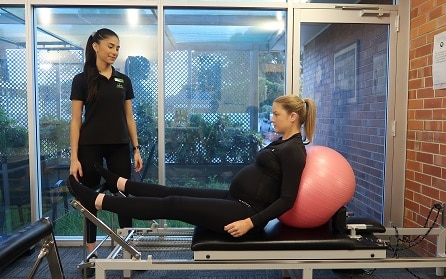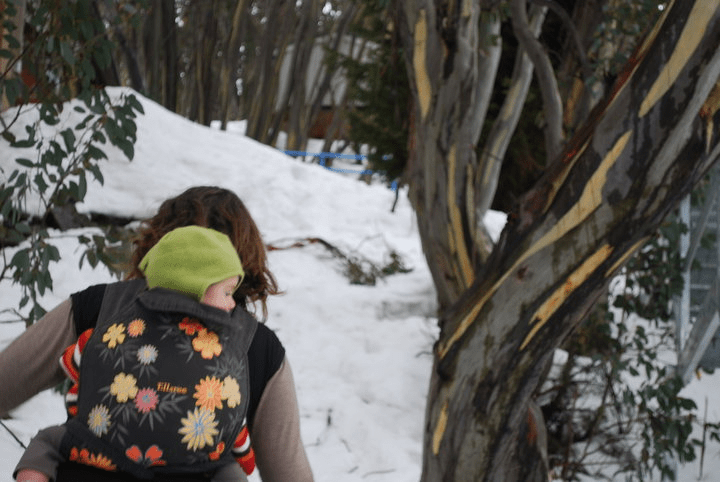
Pregnancy & Birth Place Physical Stress On A Woman's Body
There’s no doubt, pregnancy, birth and caring for a baby are some of the most physically stressful times a woman’s body will ever endure.
It takes 9 months more or less, of gradual and incremental change and miraculous physiology to change and create a baby and unfortunately there is a lot of pressure (from ourselves, as well as outside) on women to “get over it” and back to normal almost instantly.
This however, is completely unrealistic, and a woman’s body will take at least 9 months, and sometimes longer to fully recover.
The hormonal changes to grow a baby and prepare for birth and breastfeeding are complex and interrelated. They cause loosening of tissues and muscles, and it is easy to injure yourself during this time.
Hormones involved in breastfeeding extend these changes well into the post partum period.
Some traditional cultures still practice the tradition of 40 days “confinement” for this reason, for the mother and baby – in part, in order to allow healing and recovery of the mother – so don’t rush into excessive exercise. Let yourself recover.
So, for a realistic and supportive postpartum recovery what exercises to do?

To gently support the physical recovery of your body here are some safe and effective exercises you can start to implement 2 days after a vaginal, or 5 days after a cesarean delivery.
- Posture
- Pelvic floor
- Abdominals
Posture as an exercise.
When you hold your body in correct alignment you are using postural muscles to support your skeleton which in turn alleviates pressure on joints.
Postural correction is an exercise you can do anytime, without taking special time away from your baby or other important activities like rest.
- While standing: when you are standing, whether holding your baby or not, lift your chest up from the breast bone, dropping your shoulders down your back, instead of hunching them up near your ears.
- Gently draw your belly in – not so hard that you can’t breathe though.
Then be mindful of where you are bearing weight through your feet, make the weight go
evenly through the 3 points of your feet – inner ball, outer ball and central heel. If you have more weight on one of these than the others you are not supporting your posture correctly. - Sitting- when sitting for short periods of time use correct posture.
Keep a lordosis in your lower back- this uses your postural muscles, and keep your chest lifted.
“Perch” on the edge of a chair rather than slumping down on it.
Use the lower back muscles while drawing your belly button in towards your spine to roll your pelvis forward, lifting the pressure up and off of your coccyx area. When sitting for longer periods find a comfortable supportive chair to feed your baby in. Always use a pillow under the arm that is holding your baby’s head, and a pillow or rolled towel in your lower back, to maintain your lumbar lordosis. - Walking- try to take short gentle but regular walks. Start with just walking around your block, and build up from there to a couple of km’s or so, as you are getting stronger.
- Look up, or straight ahead, rather than down at the ground. Keep your chest and belly lifted while you walk and ensure your feet are not turning either in nor out, placing the big toes facing forward.
- Try to do at least some of your walking without pushing a pram.
- Babywearing is a wonderful way to improve your strength and exercise while keeping your baby happy and connected.

Pelvic floor exercise
This is a common exercise that up to 50% of women do incorrectly. It’s important to get this one right, in order to not put more stress and pressure on the vulnerable tissues by doing the opposite, which is bearing down.
During a vaginal birth, there can be tearing and trauma to the vaginal muscles, nerves, ligaments and other tissues, and the area can be swollen and tender, at best, and painful and disabling at worst.
Gently activating your pelvic floor muscles can help disperse swelling, and reactivate disengaged nerve endings, improving long term recovery, and short term comfort.
It is ideal to learn how to do these exercises correctly either before or during pregnancy.
How to do it:
Exercise 1. Long hold for power.
Sit, stand tall, lie on your back or kneel on your hands and knees
Imagine what muscles you would tighten to stop yourself from passing wind or to ‘hold on’ from passing urine. If you can’t feel a distinct tightening of these muscles, ask for some help from a women’s health physiotherapist who can help you to get started.
Now that you can feel your pelvic floor muscles working, tighten them around your front passage, vagina and back passage as strongly as possible and hold for three to five seconds. By doing this, you should feel your pelvic floor muscles ‘lift up’ inside you and feel a definite ‘let go’ as the muscles relax. If you can hold longer, then do so. Remember, the squeeze must stay strong and you should feel a definite ‘let go’. Repeat up to ten times or until you feel your pelvic floor muscles fatigue. Rest for a few seconds in between each squeeze
Exercise 2. Quick squeeze for power
Squeeze and lift your pelvic floor muscles as strongly and as quickly as possible. Do not try to hold on to the contraction, just squeeze and let go. Rest for a few seconds in between each squeeze. Repeat this 10 to 20 times or until you feel your pelvic floor muscles fatigue. Do this exercise three times a day
During both exercises you should:
• feel your pelvic floor muscles ‘lift up’ inside you, rather than feel a downward movement
• relax your thighs and buttocks
• keep breathing normally
• stop exercising if your muscles fatigue.

Abdominals:
The main and easiest thing you can do, which can be done during any activity, is activating your core muscles.
From a position of correct posture – ie sitting or standing tall, without moving your back at all, gently draw your belly button, (and belly) in toward your spine.
Focus of the area below your naval.
Hold for a second then release gently in a controlled manner without just letting go.
As you improve work on being able to hold your belly in while gently breathing normally, first for 1 then 2 , 3 or more regular breaths.
Progress by combining with your pelvic floor exercise, begin by lifting and drawing in your perineal area, then allow that to extend up to your lower abdominal area.
Practise this exercise in varying positions, sitting, standing, lying, on all fours.
Doing this exercise laying on your tummy is great, if you can be comfortable there, as it relieves a great deal of pressure from your back and pelvic floor, and it is also a welcome stretch for your body away from all of the bending and lifting and sitting stresses of caring for a new baby.
If you are unsure if you are doing any of the exercises correctly, or if any are causing pain, please stop and consult your local core physio clinic.
For further assessment, individualised programs and postnatal exercises we have a qualified womens health Physio at our Marion practice.